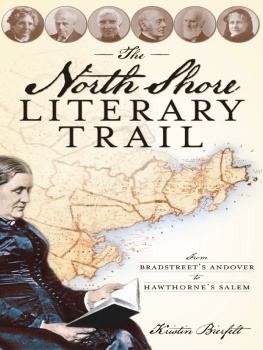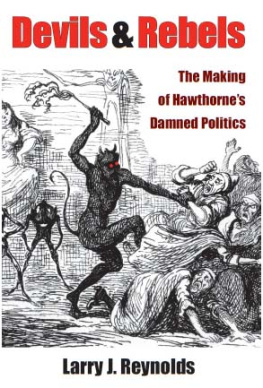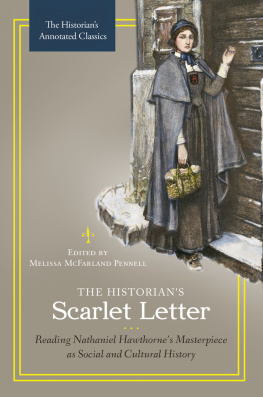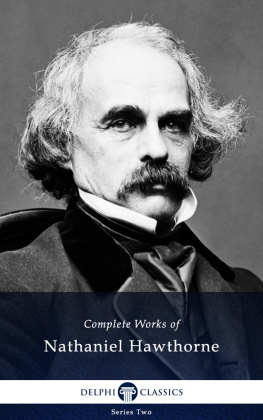Hawthornes Habitations

Hawthornes birthplace, 27 Union St., Salem, Mass.
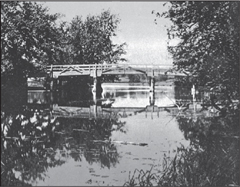
Concord River, with bridge
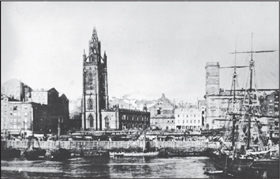
Georges Dock, Liverpool, nineteenth century
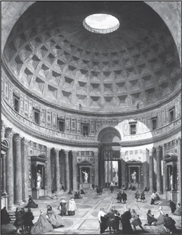
Interior of the Pantheon, Rome, by Giovanni Paolo Panini or Pannini.
Hawthornes Habitations

A Literary Life

ROBERT MILDER


Oxford University Press is a department of the University of Oxford.
It furthers the Universitys objective of excellence in research,
scholarship, and education by publishing worldwide.
Oxford New York
Auckland Cape Town Dar es Salaam Hong Kong Karachi
Kuala Lumpur Madrid Melbourne Mexico City Nairobi
New Delhi Shanghai Taipei Toronto
With offices in
Argentina Austria Brazil Chile Czech Republic France Greece
Guatemala Hungary Italy Japan Poland Portugal Singapore
South Korea Switzerland Thailand Turkey Ukraine Vietnam
Oxford is a registered trademark of Oxford University
Press in the UK and certain other countries.
Published in the United States of America by Oxford University Press
198 Madison Avenue, New York, NY 10016
2013 by Oxford University Press, Inc.
www.oup.com
All rights reserved. No part of this publication may be reproduced,
stored in a retrieval system, or transmitted, in any form or by any means,
without the prior permission in writing of Oxford University Press,
or as expressly permitted by law, by license, or under terms agreed
with the appropriate reproduction rights organization. Inquiries
concerning reproduction outside the scope of the above should be sent to the
Rights Department, Oxford University Press, at the address above.
You must not circulate this work in any other form
and you must impose this same condition on any acquirer.
Milder, Robert.
Hawthornes habitations: a literary life / Robert Milder.
p. cm.
Includes bibliographical references and index.
ISBN 978-0-19-991725-9
1. Hawthorne, Nathaniel, 18041864Criticism and interpretation. 2. Hawthorne, Nathaniel,
18041864Homes and haunts. 3. Hawthorne, Nathaniel, 18041864Travel.
4. Hawthorne, Nathaniel, 18041864Themes, motives. 5. Place in literature.
6. Mood (Psychology) in literature. 7. Melancholy in literature. I. Title.
PS1892.H55M55 2012
813.3dc23 2012025139
9 8 7 6 5 4 3 2 1
Printed in the United States of America
on acid-free paper
To the next generations
Jeff and Nina, Brian and Rebecca,
and Oren
CONTENTS
PREFACE
Regions are not only concrete geographic domains but also conceptual places.
Joseph A. Conforti, Imagining New England
His journals show a sharp-eyed, amused realist, but his imagination, which ripened in the unnatural solitude of his young manhood in Salem, set itself feats of balance on the edge of the unreal that, as the real shadows closed in, he was unable to sustain.
John Updike on Hawthorne, Late Works, Due Considerations
Prefaces are best kept brief. Some words about my title, Hawthornes Habitations. By habitation I mean, first of all, four geographical places that were the scene and literal or figurative subject of Hawthornes writing: Salem, Massachusetts, his ancestral home and ground of identity; Concord, Massachusetts, where he lived from 1842 to 1845 and came into contact with the Adamic spirit of the American Renaissance, and to which he returned in 185253 and again in 1860; England, where he served as consul in Liverpool from 1853 to 1857, absorbing an element of Englishness himself and envisioning a new direction for his work; and Italy, where he lived through most of 185859 and was challenged, like Henry Jamess Americans, by the obliquities of an older, denser civilization morally and culturally distinct from his own. Habitation also refers to a mental residence, or region of thought and sensibility rooted in time and place but not dependent on them and having its characteristic attitudes and constellation of themes, which interact with those of other times and places. In this respect, Hawthorne never abandoned any of his habitations; he assimilated them into a self that deepened and expanded as he aged without finding, after the Salem period, a settled physical and metaphysical home.
As I initially imagined the book, Salem and Concord were to be the thesis and antithesis of a dialectic that would have its synthesis, or site of collision, in , on The Scarlet Letter and The Blithedale Romance, take their impulse from this idea, though they developed in different, more complex ways than I foresaw. I had a preliminary notion of what I would do with Hawthorne and Rome. The years in England were unknown territory, as were the late unfinished romances. Somehow a reading of these things would take shape.
As it happened, Hawthornes English experience altered my sense of the contour of his career and my appraisal of the elements within his character. Critical, too, was my immersion in Hawthornes notebooks, first as a matter of research, then with increasing interest and appreciation, and later as coeditor, with Randall Fuller, of a selection of the American, English, and French and Italian notebooks, The Business of Reflection (2009). Except in the scattered hints for stories in The American Notebooks, the Hawthorne of the journals is a strikingly different person from the writer of the published fiction. Millicent Bell speaks of the temperamental nominalism of Hawthorne the journalizer, a man for whom the world is exactly what it is and no more. These are not words one would use for the author of The Scarlet Letter or Young Goodman Brown, whose fictive world is what the actual world isnt and a good deal more.
All art, journals included, is artifice, but it is one thing to refract an authorial consciousness through a formal literary medium and another to function publicly and privately at radical variance. Emersons journals are colloquial and rambling, his essays epigrammatic and polished, but the seer in the mature journals is essentially the seer of the published work. This is not the case with Hawthorne, in whom the disjunction between text and notebook is a disjunction between public and private worldviews, indeed public and private selves. Why should a realist, as in his apprehension of experience Hawthorne visibly was, have written the nonrealistic tales and romances he did? When Hawthorne works close to life, he is an extraordinarily keen and lively observer and a graceful stylist; witness not only the notebooks but also The Old Manse, The Custom-House, the essays on English life collected in
Next page


